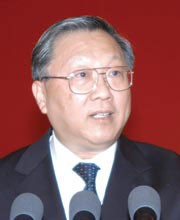
What others can — and cannot — learn from china
- Select a language for the TTS:
- UK English Female
- UK English Male
- US English Female
- US English Male
- Australian Female
- Australian Male
- Language selected: (auto detect) - EN
Play all audios:

You have full access to this article via your institution. Download PDF China has developed a strategy for science, technology and innovation (STI) based on its own history, culture and
circumstances. For example, in the last decades of the twentieth century, we sent a large number of students abroad for education and training. Our goal was to increase the number of
researchers as quickly as possible. We are also a big country that is able to invest significant sums of money in scientific infrastructure due largely to our growing economic base. The
overall strategy has been to develop our scientific and technological capabilities rapidly in order to address our most critical economic and social challenges. Yet, we also realized we had
to be patient and think long term. Other developing nations have been grappling with these complex issues in their own way. As was the case with Germany, the USA and the UK, the strategies
of developing countries will be based on their own historical and present-day circumstances. There are, of course, some general principles that developing nations would be wise to consider —
for example, the indispensable role of government, the importance of sustained investments in education at all levels, the value of linking investments in STI to national plans for economic
development, and the need to encourage private-sector investments in research and development. But each nation must determine on its own both how to pursue science-based sustainable
development and the pace at which to proceed. That does not mean developing countries should not exchange ideas and learn from one another, but rather that there are many pathways to
success. AUTHOR INFORMATION AUTHORS AND AFFILIATIONS * Lu Yongxiang (TWAS Fellow 1990) is the president of the Chinese Academy of Sciences in Beijing, China., Lu Yongxiang Authors * Lu
Yongxiang View author publications You can also search for this author inPubMed Google Scholar RIGHTS AND PERMISSIONS Reprints and permissions ABOUT THIS ARTICLE CITE THIS ARTICLE Yongxiang,
L. What others can — and cannot — learn from China. _Nature_ 456 (Suppl 1), 38 (2008). https://doi.org/10.1038/twas08.38b Download citation * Published: 30 October 2008 * Issue Date: 30
October 2008 * DOI: https://doi.org/10.1038/twas08.38b SHARE THIS ARTICLE Anyone you share the following link with will be able to read this content: Get shareable link Sorry, a shareable
link is not currently available for this article. Copy to clipboard Provided by the Springer Nature SharedIt content-sharing initiative
